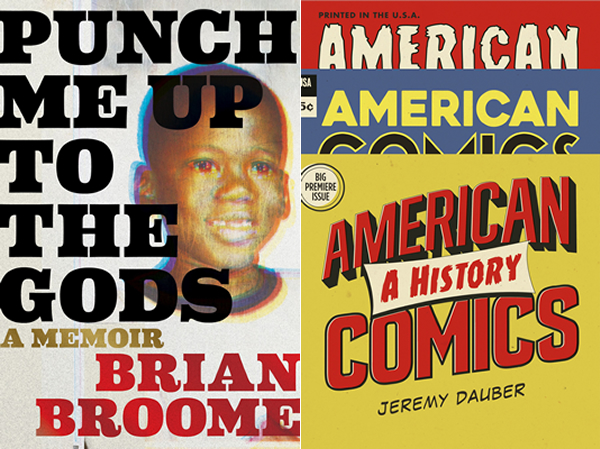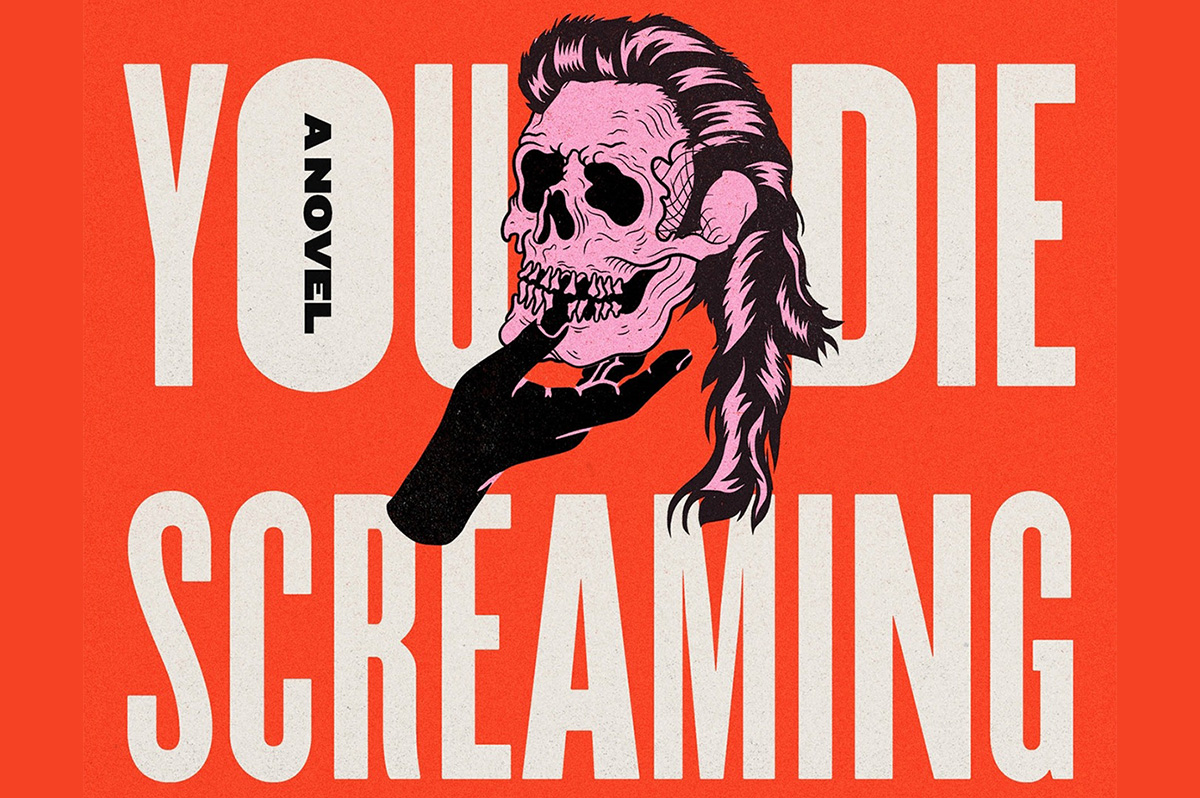Books
The best books of 2021
Our favorites in fiction, non-fiction and children’s lit

There’s still a lot of winter left.
That’s the fact staring you in the face. Once the holiday decorations are down, the toys are all put away, and you’ve rediscovered your gift certificates, what do you do with them?
You buy books, of course. And to get you started, here are a few sure-fire picks for the Best of 2021:
FICTION
What would you do if life throws you a curve-ball? In “The Guncle” by Steven Rowley (Putnam, $27.00), gay man, former TV star, Palm Springs fixture, no-responsibilities Patrick is asked to take care of his niece and nephew for the long-term. He never wanted kids at all. He never wanted to fall in love with them, either. Cute, sweet, funny, heartfelt – what more could you want?
You don’t have to have read any of the other Cork O’Conner novels to want “Lightning Strike” by William Kent Krueger (Atria, $27.00), which takes readers back to 1963, and a murder in small-town Minnesota. Cork O’Conner is a young teen then, the son of the local sheriff, and he knows that Big John Manydeeds couldn’t have possibly hung himself. But how does a boy go about proving something like that? For fans, that’s a can’t-miss question. For new fans, it’ll send you racing toward the rest of the Cork O’Conner series.
Watchers of “The Handmaiden’s Tale” will absolutely devour “Outlawed” by Anna North (Bloomsbury, $26.00). In a small corner of Texas, at an unstated time, 17-year-old Ada is struggling to give her husband children, which embarrasses him, and that’s something only witches do. And so Ada is cast out of the community and heads north, to safety, where barren women are outlaws. This dystopian, feminist Western is dangerous and delicious.
“Raft of Stars” by Andrew J. Graff (Ecco, $26.99) is a coming-of-age story of two boys who are best friends, and one of them is abused by his father. Tired of seeing his friend hurt, the other boy shoots the man and both boys run away to escape what surely will be legal trouble and maybe even jail time. They’re running toward a lie, though, and they’re heading for a waterfall they don’t know is there. This is one of those books with heartbreakingly beautiful prose in a story that’ll leave you with sweaty palms.
And finally, have you ever wondered what your life would be like if you’d taken a different path? In “The Nine Lives of Rose Napolitano” by Donna Freitas (Pamela Dorman Books, $26.00), one woman has many options in her life, each one ending in a way she never thought possible. It’s like “Groundhog Day” with a twist that’ll roll around in your mind for days…
NON-FICTION
For every kid who grew up with a pile of comic books next to the bed, in a drawer, or in the closet, “American Comics: A History” by Jeremy Dauber (W.W. Norton, $35) is a must-have. Here, Dauber follows comics from their political roots to today’s activist cartoons, and how we went from Katzenjammer Kids to MAD Magazine to comix as we know them. The bonus is that Dauber puts comics into fascinating historical perspective.
Did you buy your lottery ticket this week? If you did, it’ll make a fine bookmark for “Jackpot: How the Super-Rich Really Live – and How Their Wealth Harms Us All” by Michael Mechanic (Simon & Schuster, $28.00). You might think twice about the burdens of wealth after reading this book – and you might re-examine your thoughts on what one person’s wealth does to everyone else.
Readers who love memoirs will enjoy “Punch Me Up to the Gods” by Brian Broome (HMH, $26), who writes about growing up, being in love with the boy who abused him, and the father who did, too. It’s a coming-out tale that’s sometimes funny and always graceful, one that will sometimes make you gasp, and that you’ll be glad you read.
You know that feeling you get when you come across a stack of old magazines in the attic? That gentle, hometown, old-time feeling is extra-rich inside “The Ride of Her Life” by Elizabeth Letts (Ballantine, $28). This is the story of Annie Wilkins, aging, ailing, and alone, and the audacious cross-country ride she decides to take on a horse she’d just purchased. This feel-good story is set in the 1950s, and its neighborliness might make it be the perfect antidote for today’s world.
Lastly, “The Redemption of Bobby Love” by Bobby and Cheryl Love with Lori L. Tharps (Mariner Books / HMH Books, $28) might be the most unusual memoir you read this winter. As a young man, Walter Miller ran away from a prison bus and to New York, where he renamed himself Bobby Love and went into hiding in plain sight. Love kept to the straight-and-narrow, fell in love, got married, and raised a family but 40-some years later, the law caught up with him. This astounding, impossible story, told alternately between both Loves, is one you’ll, um, love.
CHILDREN’S BOOKS
Based on a real event (the Mexican Revolution), “The Barefoot Dreams of Petra Luna” by Alda P. Dobbs (Sourcebooks, $17.99) is the story of a young girl who becomes responsible for her Abuelita and her little sister when the Federales destroy their village and their home. This causes the trio to run north, one step ahead of those who wish to kill them, on a race to reach the border and make it to America. It’s an exciting read for 8-to-14-year-olds.
Kids who love silly stories will enjoy “Egg Marks the Spot: A Skunk and Badger Story” by Amy Timberlake, the second in what appears to be a series. A whirlwind named Skunk and his very staid, very reticent friend, Badger are at odds again – this time, over a missing rock from Badger’s collection. There are chickens involved, a bit of a mystery, dinosaurs, and a lot of fun for your 7-to-10-year-old. Hint: find the first Skunk and Badger book; your child will want that one, too.
For teens who enjoy unique memoirs, “Violet and Daisy: The Story of Vaudeville’s Famous Conjoined Twins” by Sarah Miller (Schwartz & Wade, $17.99) is the story of the Hilton sisters and their careers and lives. Born conjoined at the bottom of the spine, Violet & Daisy were “adopted” by a woman who ruled their lives. When she died, the girls were passed on to that woman’s heirs, who mishandled their careers and left them nearly penniless. This is a thrilling tale of legalities, Vaudeville, and two women determined to make their own ways, despite that they were conjoined forever. It’s the perfect read for any 14-and-older reader, including adults who love memoirs.
So now, get to the bookstore. Hunt at the library. Don’t miss these excellent books for adults and kids – and Season’s Readings!
Books
Embracing the chaos can be part of the fun
‘Make Sure You Die Screaming’ offers many twists and turns

‘Make Sure You Die Screaming’
By Zee Carlstrom
c.2025, Random House
$28/304 pages
Sometimes, you just want to shut the door and forget what’s on the other side.
You could just wipe it from your memory, like it didn’t occur. Or create an alternate universe where bad things never happen to you and where, as in the new novel “Make Sure You Die Screaming” by Zee Carlstrom, you can pretend not to care.

Their mother called them “Holden,” but they’d stopped using that name and they hadn’t decided what to use now. What do you call an alcoholic, queer, pessimistic former ad executive who’s also “The World’s First Honest White Man,” although they no longer identify as a man? It’s a conundrum that they’ll have to figure out soon because a cop’s been following them almost since they left Chicago with Yivi, their psychic new best friend.
Until yesterday, they’d been sleeping on a futon in some lady’s basement, drinking whatever Yivi mixed, and trying not to think about Jenny. They killed Jenny, they’re sure of it. And that’s one reason why it’s prudent to freak out about the cop.
The other reason is that the car they’re driving was stolen from their ex-boyfriend who probably doesn’t know it’s gone yet.
This road trip wasn’t exactly well-planned. Their mother called, saying they were needed in Arkansas to find their father, who’d gone missing so, against their better judgment, they packed as much alcohol as Yivi could find and headed south. Their dad had always been unique, a cruel man, abusive, intractable; he suffered from PTSD, and probably another half-dozen acronyms, the doctors were never sure. They didn’t want to find him, but their mother called…
It was probably for the best; Yivi claimed that a drug dealer was chasing her, and leaving Chicago seemed like a good thing.
They wanted a drink more than anything. Except maybe not more than they wanted to escape thoughts of their old life, of Jenny and her death. And the more miles that passed, the closer they came to the end of the road.
If you think there’s a real possibility that “Make Sure You Die Screaming” might run off the rails a time or three, you’re right. It’s really out there, but not always in a bad way. Reading it, in fact, is like squatting down in a wet, stinky alley just after the trash collector has come: it’s filthy, dank, and profanity-filled. Then again, it’s also absurd and dark and philosophical, highly enjoyable but also satisfying and a little disturbing; Palahniuk-like but less metaphoric.
That’s a stew that works and author Zee Carlstrom stirs it well, with characters who are sardonic and witty while fighting the feeling that they’re unredeemable losers – which they’re not, and that becomes obvious.
You’ll see that all the way to one of the weirdest endings ever.
Readers who can withstand this book’s utter confusion by remembering that chaos is half the point will enjoy taking the road trip inside “Make Sure You Die Screaming.”
Just buckle up tight. Then shut the door, and read.
The Blade may receive commissions from qualifying purchases made via this post.
Books
Two new books on dining out LGBTQ-style
Visit nightclubs, hamburger joints, and a bathhouse that feeds customers

‘What is Queer Food? How We Served a Revolution’
By John Birdsall
c.2025, W.W. Norton
$29.99/304 pages
‘Dining Out: First Dates, Defiant Nights, and Last Call Disco Fries at America’s Gay Restaurants’
By Erik Piepenburg
c.2025, Grand Central
$30/352 pages
You thought a long time about who sits where.
Compatibility is key for a good dinner party, so place cards were the first consideration; you have at least one left-hander on your guest list, and you figured his comfort into your seating chart. You want the conversation to flow, which is music to your ears. And you did a good job but, as you’ll see with these two great books on dining LGBTQ-style, it’s sometimes not who sits where, but whose recipes were used.
When you first pick up “What is Queer Food?” by John Birdsall, you might miss the subtitle: “How We Served a Revolution.” It’s that second part that’s important.

Starting with a basic gay and lesbian history of America, Birdsall shows how influential and (in)famous 20th century queer folk set aside the cruelty and discrimination they received, in order to live their lives. They couldn’t speak about those things, he says, but they “sat down together” and they ate.
That suggested “a queer common purpose,” says Birdsall. “This is how who we are, dahling, This is how we feed our own. This is how we stay alive.”
Readers who love to cook, bake or entertain, collect cookbooks, or use a fork will want this book. Its stories are nicely served, they’re addicting, and they may send you in search of cookbooks you didn’t know existed.
Sometimes, though, you don’t want to be stuck in the kitchen, you want someone else to bring the grub. “Dining Out” by Erik Piepenburg is an often-nostalgic, lively look at LGBTQ-friendly places to grab a meal – both now and in the past.

In his introduction, Piepenburg admits that he’s a journalist, “not a historian or an academic,” which colors this book, but not negatively. Indeed, his journeys to “gay restaurants” – even his generous and wide-ranging definitions of the term – happily influence how he presents his narrative about eateries and other establishments that have fed protesters, nourished budding romances, and offered audacious inclusion.
Here, there are modern tales of drag lunches and lesbian-friendly automats that offered “cheap food” nearly a century ago. You’ll visit nightclubs, hamburger joints, and a bathhouse that feeds customers on holidays. Stepping back, you’ll read about AIDS activism at gay-friendly establishments, and mostly gay neighborhood watering holes. Go underground at a basement bar; keep tripping and meet proprietors, managers, customers and performers. Then take a peek into the future, as Piepenburg sees it.
The locales profiled in “Dining Out” may surprise you because of where they can be found; some of the hot-spots practically beg for a road trip.
After reading this book, you’ll feel welcome at any of them.
If these books don’t shed enough light on queer food, then head to your favorite bookstore or library and ask for help finding more. The booksellers and librarians there will put cookbooks and history books directly in your hands, and they’ll help you find more on the history and culture of the food you eat. Grab them and you’ll agree, they’re pretty tasty reads.
The Blade may receive commissions from qualifying purchases made via this post.

You’re going to be on your feet a lot this month.
Marching in parades, dancing in the streets, standing up for people in your community. But you’re also likely to have some time to rest and reflect – and with these great new books, to read.
First, dip into a biography with “Marsha: The Joy and Defiance of Marsha P. Johnson” by Tourmaline (Tiny Rep Books, $30), a nice look at an icon who, rumor has it, threw the brick that started a revolution. It’s a lively tale about Marsha P. Johnson, her life, her activism before Stonewall and afterward. Reading this interesting and highly researched history is a great way to spend some time during Pride month.
For the reader who can’t live without music, try “The Dad Rock That Made Me a Woman” by Niko Stratis (University of Texas Press, $27.95), the story of being trans, searching for your place in the world, and finding it in a certain comfortable genre of music. Also look for “The Lonely Veteran’s Guide to Companionship” by Bronson Lemer (University of Wisconsin Press, $19.95), a collection of essays that make up a memoir of this and that, of being queer, basic training, teaching overseas, influential books, and life.
If you still have room for one more memoir, try “Walk Like a Girl” by Prabal Gurung (Viking, $32.00). It’s the story of one queer boy’s childhood in India and Nepal, and the intolerance he experienced as a child, which caused him to dream of New York and the life he imagined there. As you can imagine, dreams and reality collided but nonetheless, Gurung stayed, persevered, and eventually became an award-winning fashion designer, highly sought by fashion icons and lovers of haute couture. This is an inspiring tale that you shouldn’t miss.
No Pride celebration is complete without a history book or two.
In “Trans History: From Ancient Times to the Present Day” by Alex L. Combs & Andrew Eakett ($24.99, Candlewick Press), you’ll see that being trans is something that’s as old as humanity. One nice part about this book: it’s in graphic novel form, so it’s lighter to read but still informative. Lastly, try “So Many Stars: An Oral History of Trans, Nonbinary, Genderqueer, and Two-Spirit People of Color” by Caro De Robertis (Algonquin Books of Chapel Hill. $32.00) a collection of thoughts, observations, and truths from over a dozen people who share their stories. As an “oral history,” you’ll be glad to know that each page is full of mini-segments you can dip into anywhere, read from cover to cover, double-back and read again. It’s that kind of book.
And if these six books aren’t enough, if they don’t quite fit what you crave now, be sure to ask your favorite bookseller or librarian for help. There are literally tens of thousands of books that are perfect for Pride month and beyond. They’ll be able to determine what you’re looking for, and they’ll put it directly in your hands. So stand up. March. And then sit and read.
-

 Federal Government2 days ago
Federal Government2 days agoTreasury Department has a gay secretary but LGBTQ staff are under siege
-

 Virginia3 days ago
Virginia3 days agoDefying trends, new LGBTQ center opens in rural Winchester, Va.
-

 District of Columbia1 day ago
District of Columbia1 day agoGay GOP group hosts Ernst, 3 House members — all of whom oppose Equality Act
-

 Opinions4 days ago
Opinions4 days agoUSAID’s demise: America’s global betrayal of trust with LGBTQ people












